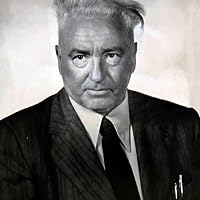Collectivization Quotes
Quotes tagged as "collectivization"
Showing 1-6 of 6

“It is true that those of us who have political experience could wrestle for power just as any other politician. But we have no time; we have more important things to do. And there is no doubt that the knowledge we hold to be sacred would be lost in the process. To acquire power, millions of people have to be fed illusions. This too is true: Lenin won over millions of Russian peasants, without whom the Russian Revolution would have been impossible, with a slogan which was at variance with the basic collective tendencies of the Russian party. The slogan was: "Take the land of the large land-owners. It is to be your individual property." And the peasants followed. They would not have offered their allegiance if they had been told in 1917 that this land would one day be collectivized. The truth of this is attested to by the bitter fight for the collectivization of Russian agriculture around 1930. In social life there are degrees of power and degrees of falsity. The more the masses of people adhere to truth, the less power-mongering there will be; the more imbued with irrational illusions the masses of people are, the more widespread and brutal individual power-mongering will be.”
― The Mass Psychology of Fascism
― The Mass Psychology of Fascism

“Stalin had developed an interesting new theory: that resistance to socialism increases as its successes mount, because its foes resist with greater desperation as they contemplate their final defeat. Thus any problem in the Soviet Union could be defined as an example of enemy action, and enemy action could be defined as evidence of progress.
P. 41”
― Bloodlands: Europe Between Hitler and Stalin
P. 41”
― Bloodlands: Europe Between Hitler and Stalin

“Some searched for metaphors to describe what had happened. Tetiana Pavlychka remembered that her sister Tamara “had a large, swollen stomach, and her neck was long and thin like a bird’s neck. People didn’t look like people — they were more like starving ghosts.” Another survivor remembered that his mother “looked like a glass jar, filled with clear spring water. All her body that could be seen . . . was see-through and filled with water, like a plastic bag.”
A third remembered his brother lying down, “alive but completely swollen, his body shining as if it were made of glass”.”
― Red Famine: Stalin's War on Ukraine
A third remembered his brother lying down, “alive but completely swollen, his body shining as if it were made of glass”.”
― Red Famine: Stalin's War on Ukraine
“The transitional nature of the 1920's can also be discerned in what may be labeled a new kind of 'dvoeverie' (or dual faith), a syncretistic belief that combined peasant ways and new Communist practices in tentative and uneasy assimilation. For example, there were reports of portraits of Lenin or Kalinin turning up in icon corners and of habit-ridden old peasants crossing themselves in front of these holy images.”
― Peasant Rebels Under Stalin: Collectivization and the Culture of Peasant Resistance
― Peasant Rebels Under Stalin: Collectivization and the Culture of Peasant Resistance
“According to an OGPU report, so many livestock had been slaughtered in the Central Black Earth Region that peasants were feeding pigs with meat.”
― Peasant Rebels Under Stalin: Collectivization and the Culture of Peasant Resistance
― Peasant Rebels Under Stalin: Collectivization and the Culture of Peasant Resistance
“The peasant rebellion against collectivization was the most serious episode in popular resistance experienced by the Soviet state after the Russian Civil War. In 1930, more than two million peasants took part in 13,754 mass disturbances. In 1929 and 1930, the OGPU recorded 22,887 "terrorists acts" aimed at local officials and peasant activists, more than 1,100 murders.”
― Peasant Rebels Under Stalin: Collectivization and the Culture of Peasant Resistance
― Peasant Rebels Under Stalin: Collectivization and the Culture of Peasant Resistance
All Quotes
|
My Quotes
|
Add A Quote
Browse By Tag
- Love Quotes 97k
- Life Quotes 75.5k
- Inspirational Quotes 72.5k
- Humor Quotes 43.5k
- Philosophy Quotes 29.5k
- Inspirational Quotes Quotes 27k
- God Quotes 26k
- Truth Quotes 23.5k
- Wisdom Quotes 23.5k
- Romance Quotes 23k
- Poetry Quotes 22k
- Death Quotes 20k
- Happiness Quotes 18.5k
- Life Lessons Quotes 18.5k
- Hope Quotes 18k
- Faith Quotes 18k
- Quotes Quotes 16.5k
- Inspiration Quotes 16.5k
- Spirituality Quotes 15k
- Religion Quotes 15k
- Motivational Quotes 15k
- Writing Quotes 14.5k
- Relationships Quotes 14.5k
- Life Quotes Quotes 14k
- Love Quotes Quotes 13.5k
- Success Quotes 13.5k
- Time Quotes 12.5k
- Motivation Quotes 12k
- Science Quotes 11.5k
- Knowledge Quotes 11k

